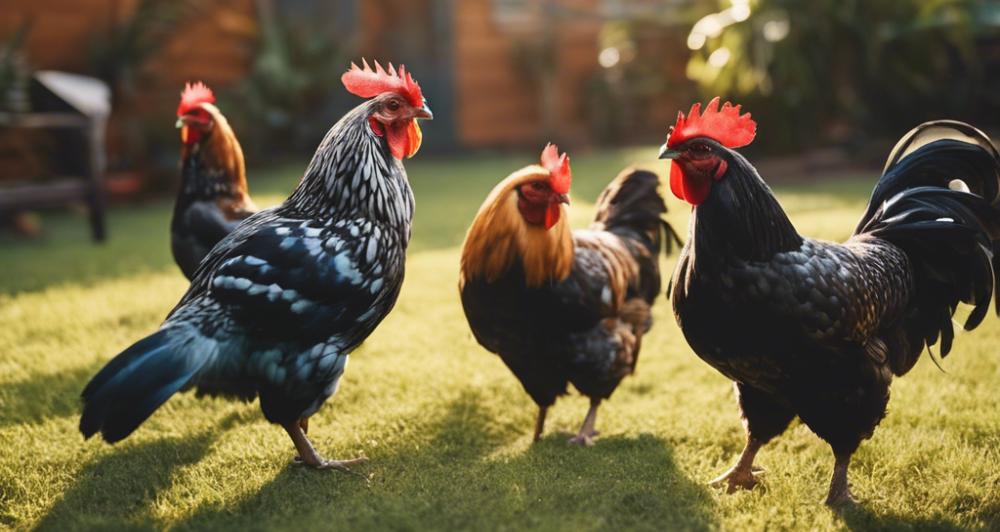
In the shadowy jungle of American poultry history lies a breed shrouded in mystery and intrigue – the Java chicken. Like a whispered tale carried by the wind, their origins remain elusive, with some attributing their lineage to the enigmatic island of Java, while others trace their roots to the bustling ports of the Far East.
Yet, despite the enigma surrounding their ancestry, one thing is certain – Java chickens were developed in the United States.
Awww, gotcha… so much for the mystery!
Sorry about that. I thought the Java Island thing was kinda mysterious. Anyway…
An Attention-grabbing Breed
A breed that commands attention with its regal bearing, its broad, rectangular bodies display a sense of strength and resilience. Atop their heads is a distinctive single comb.
But their attraction extends far beyond their physical attributes. Java chickens are the embodiment of gentle grace, and their temperament is calm and placid.
They are at home in both the confines of a backyard coop and the free-range pasture. Their foraging instincts are strong, their keen eyes scanning the earth for hidden treasures.
More importantly, Java chickens are dual-purpose, excelling in both egg production and meat quality. Their hens lay a steady amount of brown eggs.
When it comes to meat production, Java chickens are renowned for their flavorful, tender meat.
An Uncertain Future
Yet, despite their remarkable qualities, Java chickens face an uncertain future. Their numbers have dwindled, relegated to the realm of heritage breeds, a dwindling few holding onto their legacy. It is a stark reminder of the fragility of biodiversity.
This is a call to action, a shout-out to rediscover the Java chicken, embrace their heritage, and rekindle their flame.
Let us open our coops to these magnificent chickens, allowing them to grace our lives with their presence, their beauty, and their unwavering contribution to sustainable farming practices.
Uncover the Java Chicken’s Ancestry
Tracing the breed’s roots to the Far East, potentially the island of Java.
The exact origins of the Java chicken are a mystery. One hypothesis suggests that their roots lie in the continent of Asia, possibly the island of Java itself.
This theory is supported by the breed’s striking resemblance to other Asian chickens, particularly those from the Malay Archipelago.
The island of Java, located in the heart of Indonesia, has a rich history of poultry breeding, with records dating back centuries. It is plausible that traders or seafarers brought chickens from Java to other parts of Asia and Europe, eventually reaching the shores of North America.
This hypothesis is further strengthened by the breed’s name, which directly references the island of Java.
Researching the breed’s evolution and development within the United States.
While the origins of the Java chicken remain uncertain, it is widely accepted that their development and widespread popularity occurred in the United States.
The breed first gained prominence in the mid-19th century, particularly in the northeastern states of New York and New Jersey. Their popularity soared due to their dual-purpose nature, excelling in both egg production and meat quality.
As the demand for poultry increased, Java chickens played a pivotal role in shaping the American poultry landscape.
They were instrumental in the development of several other renowned breeds, including the Jersey Giant, Plymouth Rock, and Rhode Island Red.
These breeds, which have become staples in the poultry industry, owe their genetic heritage to the Java chicken’s resilience and adaptability.
Physical Traits that Define the Java Chicken

With three different colors and an upright posture, these birds are a pleasure to look at. Having variety in your flock is not only fun but makes it easy to tell your girls, and certainly your boys, apart.
Three recognized color varieties – Black, Mottled, and White
Java chickens come in three distinct color varieties. The Black Java chicken is the epitome of elegance, their plumage a deep, shimmering black like polished obsidian. Their contrast is striking, their dark feathers accentuated by a bright red comb and wattles.
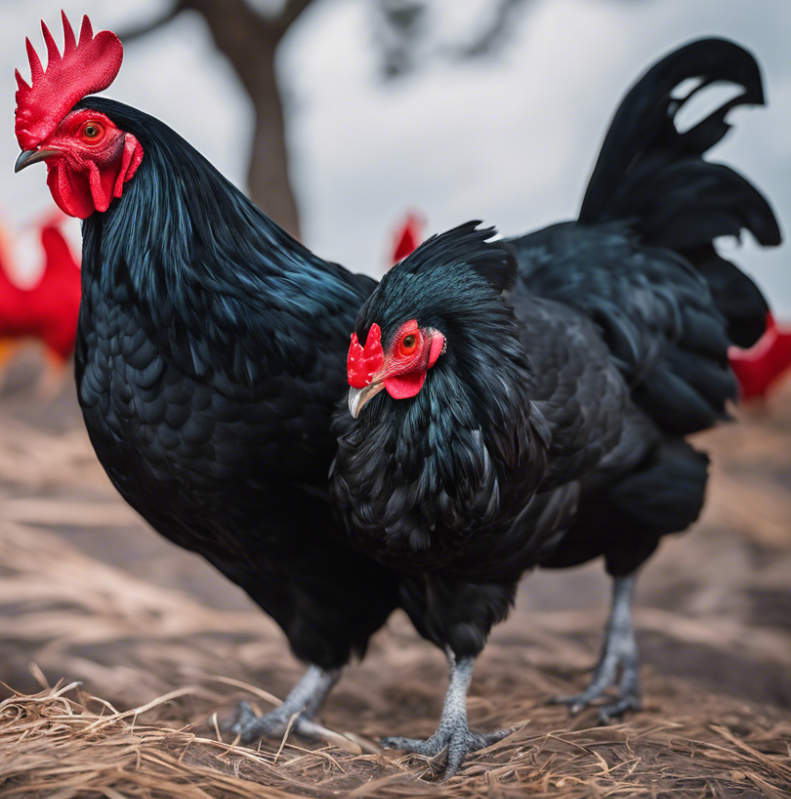
The Mottled Java chicken, on the other hand, presents a contrast of hues. Their plumage is a blend of black, white, and gray, each feather bearing a unique pattern. This mottled appearance lends rustic charm to your flock.

The White Java chicken is adorned with plumage as white as snow. Their feathers have no markings. Their white plumage, often accented by a bright red comb and wattles makes a nice contrast.
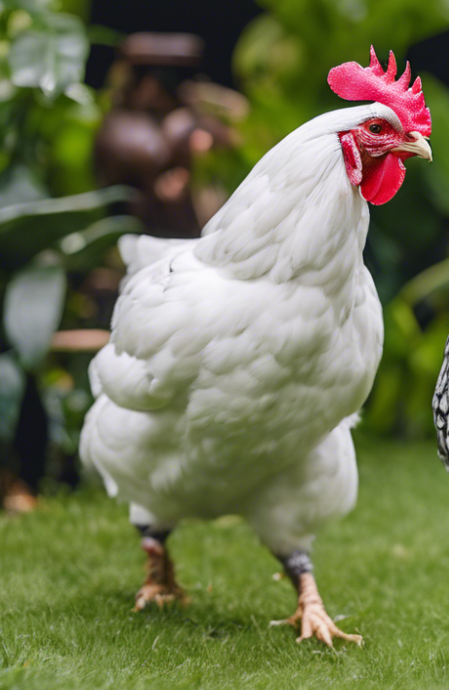
A Sturdy Build and distinctive single comb
Beneath their plumage lies a sturdy build that speaks to the Java chicken’s resilience and adaptability.
Their bodies are broad and rectangular. Their long backs, sloping towards their tails, provide ample space for their internal organs, allowing them to thrive in a variety of environments.
A distinctive single comb, a trait of their heritage, sits atop their heads. The single comb, unique to Java chickens, adds a touch of regality to their appearance.
A Gentle Demeanor: The Java chicken’s calm and docile temperament
Java chickens have a gentle and docile temperament despite their majestic appearance and dual-purpose prowess.
They are not known for aggression or territorial behavior, making them an ideal choice for backyard chicken keepers and those seeking a calm flock.
Their calm and placid nature extends to their interactions with humans. Java chickens are generally friendly and approachable, readily accepting attention and affection.
They are known for often exploring their surroundings with a gentle curiosity.
Their gentle demeanor makes them a joy to have around, adding a touch of tranquility to any environment.
Dual-Purpose Java Chickens
Java chickens are versatile, moving between the roles of egg producers and meat providers.
Their dual-purpose nature has made them a prized possession among farmers and backyard enthusiasts alike, ensuring their continued significance in sustainable farming practices.
Egg Production: Moderate Yet Reliable
Java chickens are not prolific egg layers, but their moderate production of around 100-150 brown eggs per year makes them a reliable source of fresh, nutritious eggs for small-scale farmers and backyard keepers.
Their eggs are a good size, with a rich, deep brown shell, and are excellent in flavor and for recipes.
The Java chicken’s ability to lay eggs consistently throughout the year, even during colder months, further increases their value as egg producers.
Their adaptability to free-range environments allows them to forage for natural supplements, enriching their diet and contributing to the quality of their eggs.
Meat Production: A Heritage Breed with Flavorful and Tender Meat
Java chickens have earned a reputation for producing high-quality meat.
The breed’s slow-growing nature contributes to the exceptional quality of their meat. Unlike fast-growing broilers, Java chickens are allowed to mature naturally, developing a rich flavor and tender texture.
Their meat is also known for its lower fat content, making it a healthier choice for consumers.
Adapting to Free-Range Environments
Java chickens are remarkably adaptable to free-range environments, thriving in open pastures and woodlands.
Their strong foraging instincts allow them to supplement their diet with a variety of insects, worms, and vegetation, reducing the need for supplemental feed and contributing to sustainable farming practices.
Their free-range lifestyle also promotes their overall health and well-being. The constant movement and exposure to natural elements enhance their physical fitness and immune systems, making them less susceptible to diseases and illnesses.
Also, free-ranging Java chickens contribute to pest control (think ticks, yuck), helping maintain a healthy ecosystem on farms and homesteads.
Nurturing Java Chickens: Providing Care and Requirements
Java chickens require proper care and attention to thrive and flourish like all living creatures.
Ensuring their well-being enhances their quality of life and contributes to their productivity and overall health.
We can foster a harmonious relationship with these remarkable birds by understanding their specific needs and providing a comfortable and nurturing environment.
Creating an Environment that Meets Their Needs
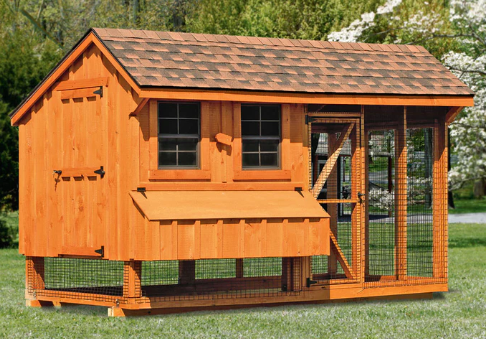
Click on the photo for more information on this coop.
Creating a comfortable and spacious home for Java chickens is essential for their physical and mental well-being.
Their coop should provide ample space for movement, perching, and nesting, allowing them to express their natural behaviors and maintain their physical health.
A well-ventilated coop is crucial for maintaining air quality and preventing respiratory issues. Proper ventilation helps to remove dust, ammonia fumes, and other airborne contaminants that can harm the chickens’ health.
Additionally, protection from extreme weather conditions, such as excessive heat or cold, is essential for their comfort and well-being.
Providing Ample Space for Foraging and Roosting
Like their wild ancestors, Java chickens are naturally inclined to forage for food. Providing them with ample space to roam and scratch around is essential for their physical and mental stimulation.
A spacious yard or pasture, enriched with vegetation and natural elements, allows them to exhibit their foraging instincts and supplement their diet with a variety of nutrients.
Roosting is essential for Java chickens, providing them with a safe and comfortable place to rest and sleep.
Adequate roosting space should be elevated off the ground, well-ventilated, and free from drafts. Roost bars should be smooth and round to prevent foot injuries and discomfort.
Maintaining Proper Hygiene: Implementing Regular Cleaning and Sanitation Practices
Maintaining proper hygiene in the Java chicken coop is crucial for preventing the spread of diseases and illnesses.
Regular cleaning of the coop, including the removal of droppings, soiled litter, and uneaten food, is essential. Also, disinfecting the coop with a suitable poultry disinfectant helps eliminate harmful bacteria and viruses.
Providing fresh, clean water is essential for Java chickens‘ health and hydration. Water containers should be cleaned regularly to prevent the growth of algae and bacteria.
Fresh food should be offered daily in clean feeders to prevent contamination and spoilage.
Recognizing Signs of Illness and Addressing Concerns Promptly
Regular monitoring of Java chickens’ health and well-being is essential for early detection of potential problems.
Observing their behavior, appearance, and droppings can provide valuable clues about their overall health. Changes in appetite, activity levels, or droppings should be noted and addressed promptly.
Preventive measures, such as regular vaccination and deworming, play a crucial role in maintaining the health of Java chickens.
When necessary, Consulting with a veterinarian can provide expert guidance and treatment for any health concerns, especially a vet with bird experience.
Java chickens require proper care and attention to thrive and flourish like all living creatures.
Java Chickens: Champions of Sustainable Farming Practices
With today’s increasing concern for sustainable practices and environmental consciousness, Java chickens are practitioners of sustainable farming practices.
Their adaptability, resourcefulness, and dual-purpose nature make them valuable to sustainable farming systems, contributing to a happy relationship between us and the environment.
The presence of Java chickens in free-range environments enhances biodiversity and promotes a natural balance in the ecosystem.
Their presence also attracts other beneficial creatures, such as birds of prey and pollinators, which further contribute to the health and vitality of the ecosystem.
Java chickens, in a sense, act as catalysts for biodiversity, fostering a harmonious coexistence between various species within the farming environment.
The Java Chicken’s Traits in Relation to Other Dual-Purpose Breeds
Java chickens stand out among dual-purpose breeds for their combination of moderate egg production, flavorful meat, and gentle temperament.
While some breeds may excel in egg production or meat quality, Java chickens offer a balanced approach, making them a versatile choice for those seeking both egg and meat production.
Their adaptability to free-range environments further enhances their value in sustainable farming systems. Java chickens thrive in open pastures and woodlands, foraging for natural supplements and contributing to pest control.
This ability to reduce reliance on supplemental feed and maintain a healthy ecosystem makes them a preferred choice for environmentally conscious farmers.
The Java Chicken’s Adaptability to Backyard Settings
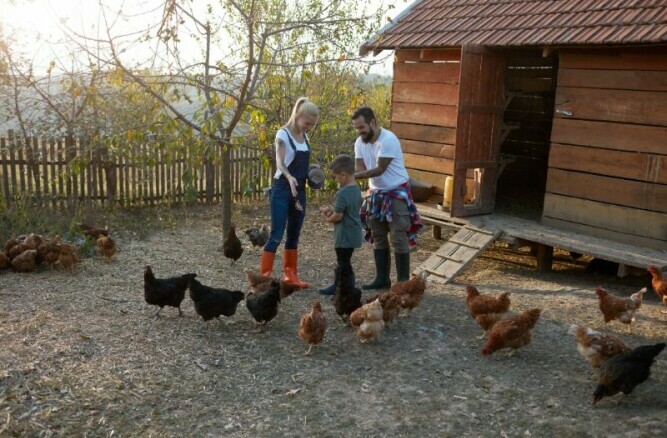
Java chickens are well-suited for backyard chicken keeping due to their gentle temperament, moderate size, and adaptability to various environments.
Their calm and docile nature makes them a harmonious addition to families with children, allowing for a closer connection with these remarkable birds.
Their adaptability to free-range environments also allows them to thrive in backyard settings, foraging for natural supplements and contributing to a healthy ecosystem.
Navigating Challenges: Addressing Potential Issues and Solutions in Raising Java Chickens
While Java chickens are generally low-maintenance and adaptable, some potential challenges may arise in their care. One common concern is their susceptibility to heat stress due to their dark plumage.
Providing shade and access to cool water during hot weather is essential to address this issue.
Additionally, their foraging instincts may lead them to scratch up gardens or flower beds. To prevent this, establishing designated foraging areas and providing them with ample opportunities to forage in controlled environments can help minimize potential damage.
By understanding these potential challenges and implementing proactive measures, individuals can ensure a harmonious and successful experience in raising Java chickens.
Preserving the legacy of Java chickens is not merely about safeguarding a breed but also about embracing sustainable practices and reconnecting with our agrarian roots.
By including these remarkable birds in our farming practices and backyard flocks, we honor their heritage and pave the way for future generations to experience the joy and fulfillment that comes from nurturing these magnificent creatures.
Do you have Java Chickens? Tell us about them below. We’d love to know what you think about bringing them back as regular features of our backyard flocks.
Dave
Chickenmethod.com
